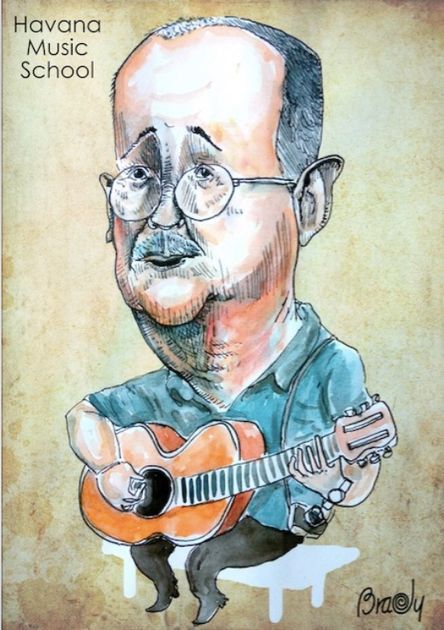Silvio Rodriguez Dominguez is the artist who was elected in Cuba, along with Ernesto Lecuona, as the best Cuban composer of the twentieth century and, with Joan Manuel Serrat, as the best Latin American composer of the second half of the century.
This interpreter, in the late 70s, had three albums: “Días y flores” (Days and Flowers) from 1975; “Al final de este viaje, la vida”, (At the end of this journey, life) from 1978; and “Mujeres” (Women) in 1979. But from the 80s this number even increase considerably.
Along with his album, Cuban singer innovations also increase.d The movement of the Nueva Trova was looking deep musical roots of the island. Their goal was attaining a sound that would identify.
The mix of various genres in the “nueva trova” was increasingly common. Join rumba, son, guaguancó with latin jazz, blues or classical music, was not a rarity. In addition, the themes of the songs and metaphors achieved high levels of complexity. Many critics claim that the rejection of a sector of the public to these works is due to the culture that one must possess to understand.
The 80s and the fame of Silvio Rodriguez
Silvio fame and critical worldview would appear on his next achievement. “Rabo de Nube”, 1980, would involve the participation of maestro Frank Fernandez, Anabell Lopez and Tita Parra.
“Unicornio” (Unicorn), 1982, included the “Canción urgente para Nicaragua” (Urgent Song for Nicaragua), in honor of the Sandinista Revolution. In 1984, he launches the “Tríptico” (Triptych) in collaboration with Anabell López, Pancho Amat, Frank Fernandez, Manguaré Group and Pablo Milanés. In 1986, Spain recorded on the double album “Causas y azares” (Causes and Azares). By 1988, already available to the public another double album “Oh, melancolía” (Oh, melancholy!).
During this time, the singer made several international tours. He visited the scenes of Argentina, Chile, Spain, among others. In each of these shared his performances with famous artists like Antonio Tarragó Ros, Roy Brown or Chucho Valdes. As with groups like Irakere, Diákara or Afrocuba.
The current music
The last decade of the century would bring much more activity in the musical career of Silvio Rodriguez. In 1992 he appeared “Silvio”, the first part of the trilogy was completed with “Rodríguez” 1994, and “Dominguez”, in 1996. Then in 1998, would extend to a tetralogy with “Descartes”. In this tetralogy an acoustic sound, achieved by the almost exclusive use of the guitar and the bass is achieved. In a few moments it is accompanied by the percussion or electronics
The 80s and the fame of Silvio Rodriguez
Currently, the musical production of Silvio continues. In 2002, he released his album “Expedición” (Expedition). The following year, he released “Cita con ángeles” (Date with Angels). In 2006, he released “Érase que se era” (Once upon a time). In 2010, “Segunda cita” (Second appointment) would be his last creation.
At the same time, Silvio never stopped visiting and playing in all cities and events that would listen. He even made a community project that allows people in the most remote areas of the island know the Nueva Trova.
Silvio Rodriguez’s music is in today’s youth. His lyrics are not the pamphlet of an era, but are the feelings of a generation and a nation. No matter the political affiliation of the public, everyone feels the truth of the man behind the guitar.


0 Comments